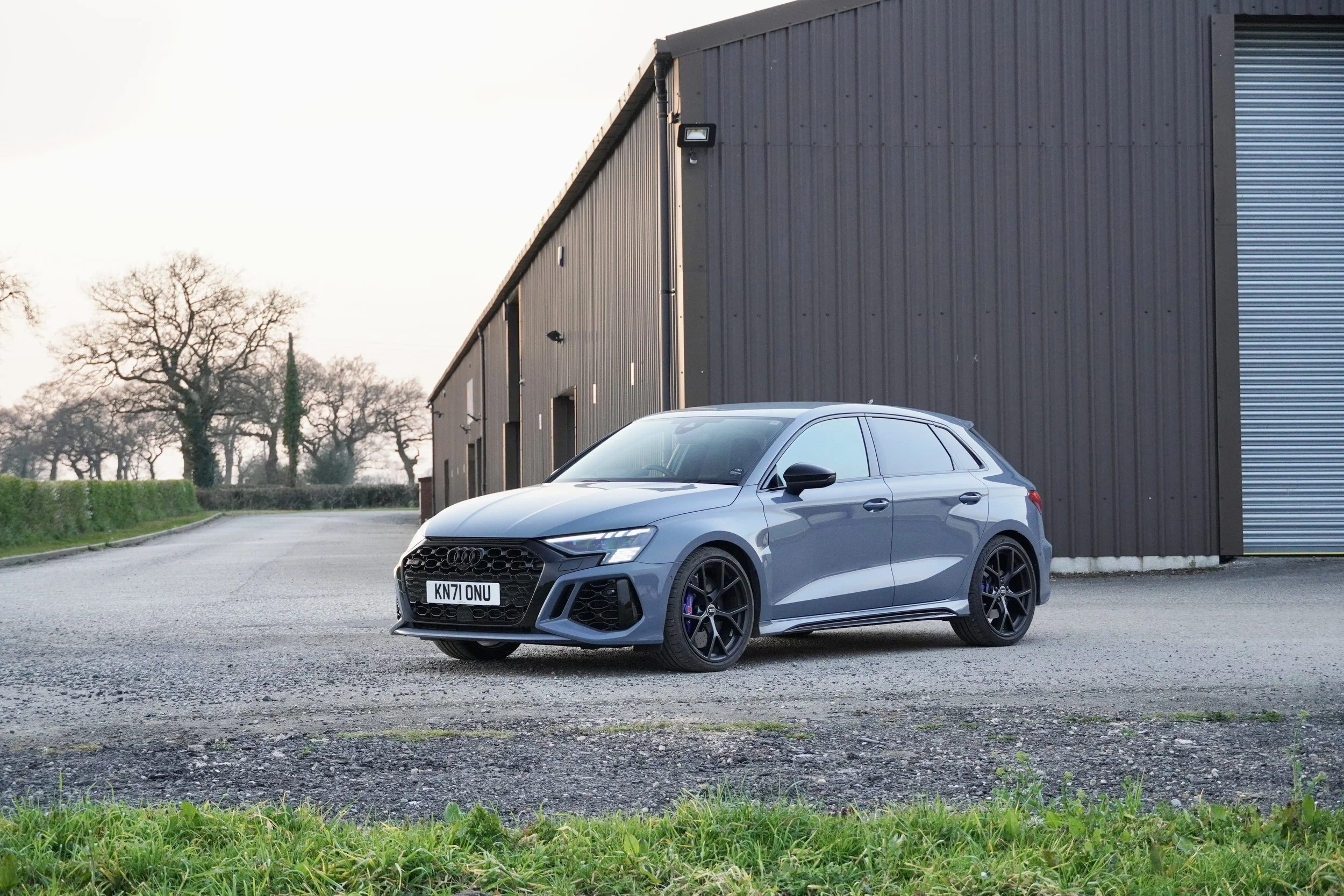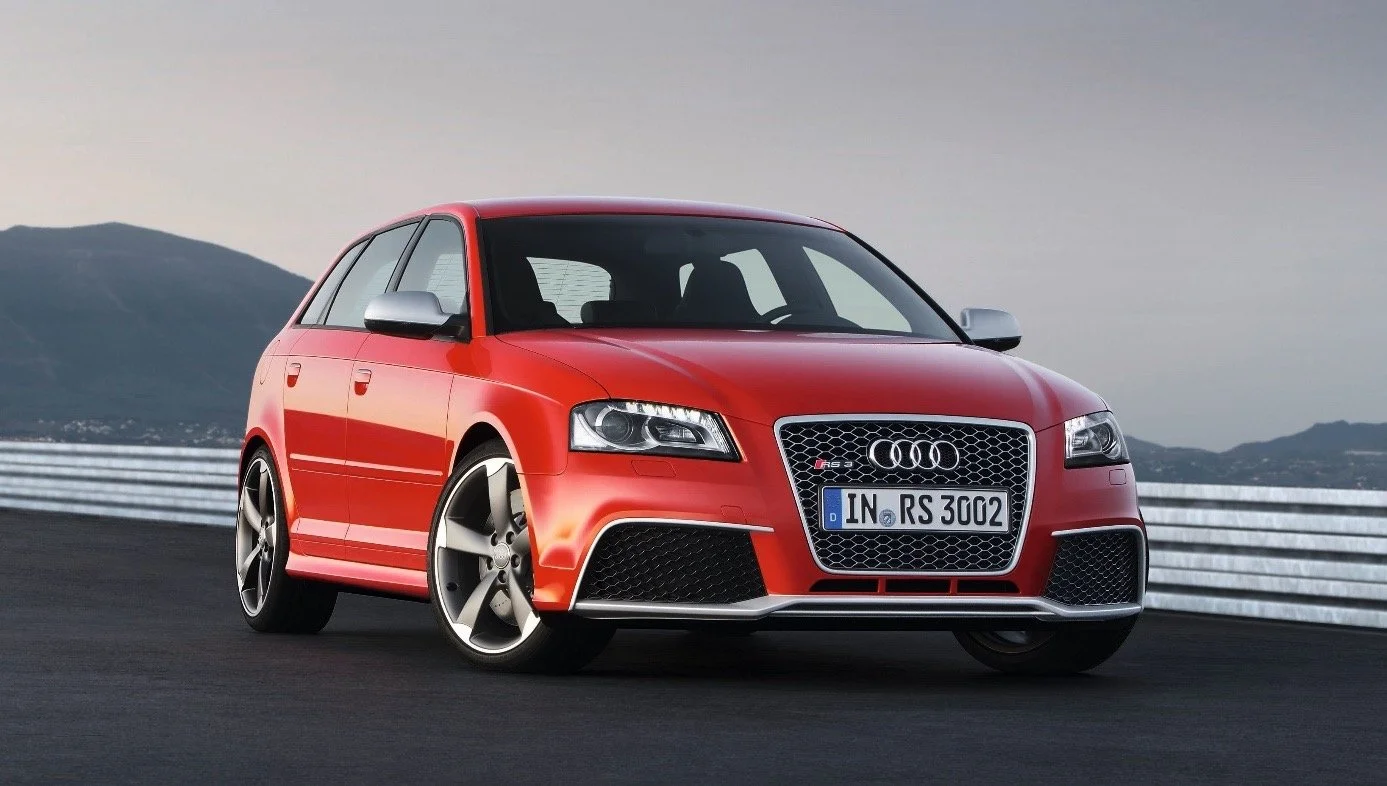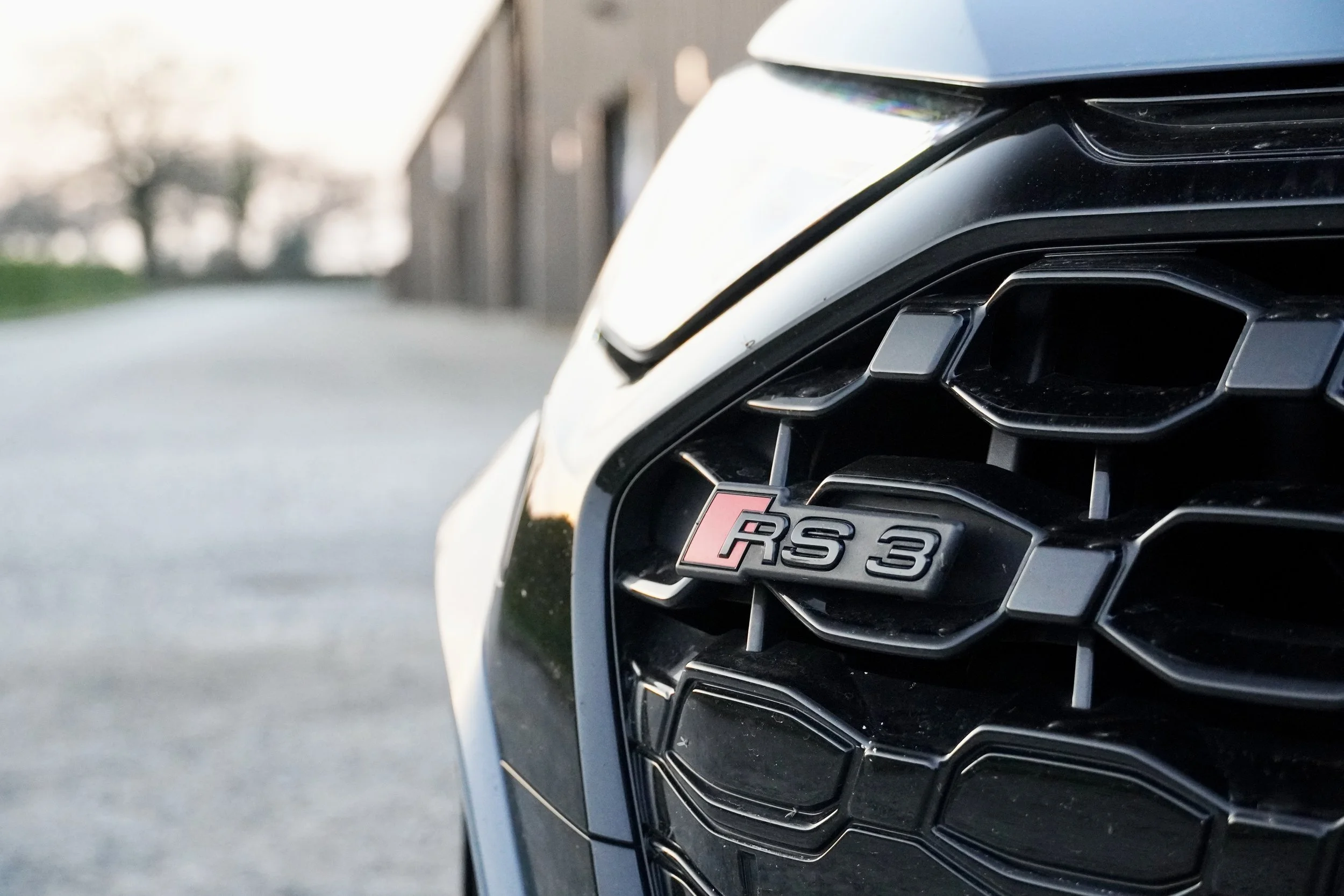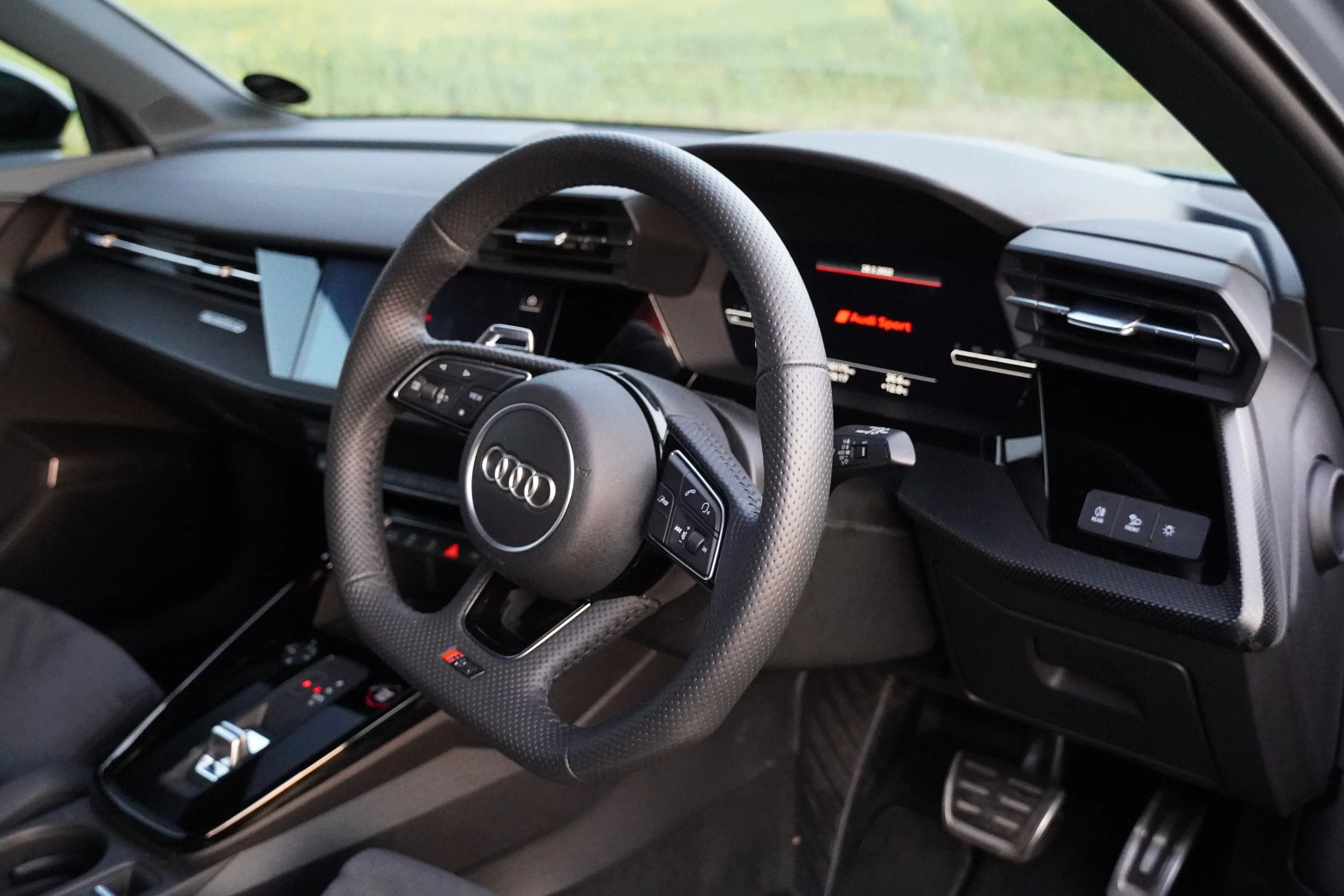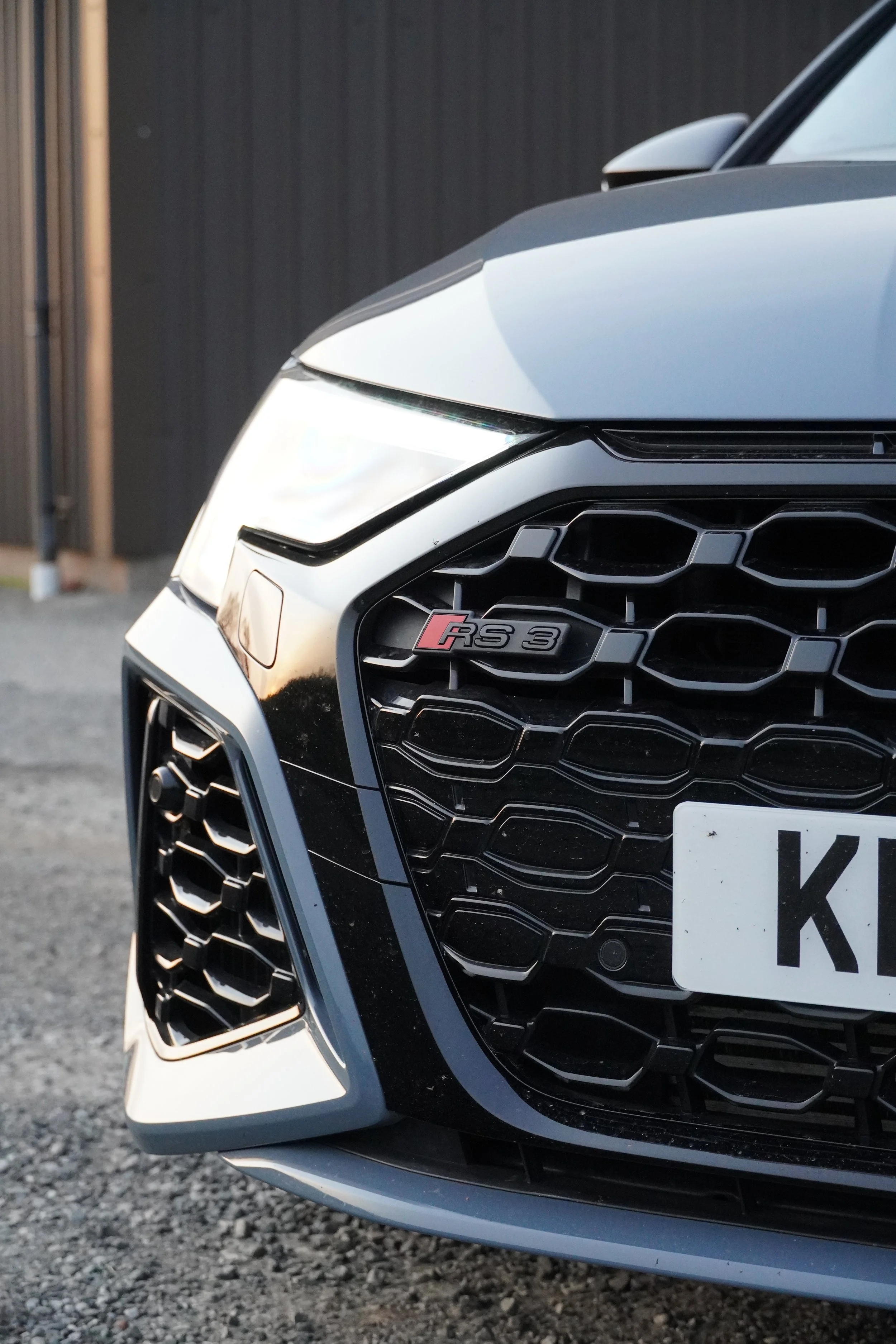Review | Audi RS 3 (now comes with a room full of elephants).
Since its European launch in 2011, the Audi RS 3 has been regarded by many as the ultimate hot hatchback on the market with its mind-bending and eargasm inducing five-cylinder engine. Famed for rewarding drivers with both earth-shattering performance and all the practicalities of an everyday small car, each iteration of the RS 3 has ticked many a box for many a driver.
The latest iteration (model year 2021/22) was promised with more performance, more power and an updated extensive list of options, but now that it's here, I can't help but wonder if the latest version of the car is all a little too similar to the previous models, only more... subdued?
The latest RS 3 comes with the same engine we saw in 2011, a dulled down soundtrack and a significantly increased price tag… Does this mean the hot-hatch king has finally fallen from its throne?
If you're a similar age to me, then chances are you'll have fond memories of the late nineties and early noughties with dangerously un-PC Saturday night family entertainment on the television, monthly doses of automotive media bound together in paper form (I think we called them magazines) and something very new and exciting called the internet.
Assuming also that you have (and had) a vested interest in cars at that time, then I will probably be able to pick out a few cars that will raise a smile and trigger some happy memories from the time of their launch on our favourite motoring TV shows, such as; the Ferrari 360, the E46 BMW M3, the Lamborghini Murcielago and the very first Ford Focus RS. I've said it before, and I'll say it again - in my opinion, cars from this era were simply fantastic. They were fantastic for many reasons; they were analogue, light, and with minimal electrical fuss and interference. Above all, the industry was innovative, the technology was developing, and SUVs mainly were thought of as nonsense by the masses.
The late 1990s was especially brilliant because it saw a re-birth of the hot-hatch. Since the late 1980s, with the exception of a couple of sporty looking Peugeots and some big money homologation rally cars, VW seemingly had the 'hot-hatch' market sewn up, but then something exciting and unexpected happened. VW's sister brand Audi was known for producing big sensible family cars like the 80 and the 100, but when Audi replaced model numbers with models starting with 'A', they also entered into a new field for the marque; hatchbacks.
Audi being Audi, with its rallying and motorsport heritage, thought it wise to lean on the experience and expertise of its sister company's iconic Golf GTI and produce its own version. It was based on the A3 and was named the S3.
The S3 was released in 1999 and packed an even bigger punch than its VW badged sister with a 210bhp turbocharged engine. After just a few months, the power output was increased to 225bhp, maximising the output of the now iconic 'BAM' motorsport engine.
The S3 was a giant leap for Audi - the new model was exciting and, fortunately, was well-received worldwide by driving enthusiasts resulting in the S3 being continued in all of the following iterations of the A3.
In 2011, Audi took the S3 one step further by adding the letter 'R', which meant Audi's hot hatch was even hotter; The RS 3 was born.
So, let's imagine now that it's 2012, and if we're still playing the 'we're probably in our 30s' game, then by this point, we're well into our 20s, and we're marvelling at a frankly bonkers small Audi that's just come out with half a Lamborghini engine under the bonnet.
The first RS 3s were delivered to paying customers in 2011, and as a car, it was celebrated almost as much as the S3 was in 1999. Once again, Audi had thrown the hot-hatch mould at the wall and made something unnecessarily brilliant. The RS 3 became something of an icon, and thanks to its five-cylinder engine, it would turn heads in the same way that a supercar would.
Let's hop forward to the present day (April 2022). Audi has recently launched the latest and greatest version of their hot hatch, the new RS 3, and we've taken delivery of one thanks to the Audi UK press office.
The new RS 3 comes with some very impressive stats. The specific car the press office has given us is equipt with the RS dynamic pack enabling the car to launch from 0-62mph in 3 seconds, achieve a top speed of 180mph and accelerate with 500nm of torque. It's also got superb interior options, such as upgraded seats and a Bang & Olufson sound system. It also has bigger wheels, carbon-ceramic brakes, and 'convenience options' such as radar cruise control, wireless Apple Car Play, and a wireless charging pad. The RS 3 has become a pretty posh thing, yet it's maintained its lunacy in the form of a howling 5-pot that stirs up emotions of a group-b rally car from the 1980s whilst zipping along the local B-roads.
"So, where are all these elephants I've been promised??" - (I hear you cry).
Elephant in the room #1: Let's start with that amazing engine - half a Lamborghini engine! - What could there be to complain about? Well, it's not exactly new. In fact, the engine under the bonnet in the 2022 Audi RS 3 is the very same engine you'll find in the RS 3 from 2012. Admittedly, it has received some upgraded internals and ECU fettling, but it's very much the same kit that got us all very excited ten years previously.
Elephant in the room #2: It seems to have become a bit sensible? Previous versions of the RS 3 have featured lunacy throughout. The engine map on previous cars allowed for over-fueling, which made the RS 3 roar on acceleration, rumble on deceleration, and pop and bang through the gears. Typically I'd moan about 'over-engineered sound', but in the RS 3, it was acceptable thanks to the 'Lambo lump' under the bonnet. This new model doesn't rumble, it doesn't pop, and it doesn't bang either. Sure, you can tell it's a 5-pot, but it barely roars - it's more of an amplified purr when cruising along.
Elephant the room #3: It's suddenly become very, very expensive. The original '99 S3 was priced from £15k adjusted for inflation; that's around £28k in today's money, so let's call it £30-35k with some options added. Follow-on models and iterations will always be a little more expensive, but the RS 3 hasn't just jumped in price; it's leapt. An entry-level RS 3 will now set you back £51,000. With all its ticked options, the press car I'm driving is a few quid short of £78,000 - SEVENTY-EIGHT GRAND!
Suddenly this ever-evolving lunatic car seems to have become crazy for all the wrong reasons, but is that fair? Let's address our elephants once more.
The engine is old hardware, yes - but is it outdated? Absolutely not. The five-cylinder turbocharged engine was nothing short of remarkable in 2012, and it's still an exceptional engine today. The internals have been improved, the turbos have been refined, and the advances in software have pushed the RS 3 to the performance capabilities of a supercar. There was nothing close in the same category to the performance of a RS 3 in 2012, and it's a similar story in 2022 as the advances to the engine performance are bordering on witchcraft.
Has sensible replaced silly? Partially yes, it has, but is that Audi's fault? No - and there is an excellent compromise. European bureaucratic law makes it harder and harder each year for all manufacturers to make noisy and engaging engine sounds. This is mainly thanks to the ruling on the output of emissions. The fueling system that made the previous iterations of the RS 3 so exciting simply no longer works under the rules for emissions, so the pops, bangs and rumbles have had to stop. It's not only Audi that has suffered from this change in the law; all car manufacturers that sell in Europe have to abide by the rules, so cars, on the whole, have quietened down. What has improved on the latest model is the turbo sounds and wastegate chatter. With the windows down, accelerating under load and lifting off rewards you with the most glorious whoosh and chatter from under the bonnet. That, paired with the still triumphant sound from the exhaust, makes the RS 3 feel very special to drive. Plus, whilst the car makers have to follow the rule book, it doesn't necessarily mean that we (the buyer) must. There will undoubtedly be warranty friendly ways of bringing back some of the personality that the rule books have squashed.
Okay, now the big one - the price. It is expensive, and it's pretty difficult to justify this one, but when did you last hear of anyone going into a dealership to transfer the full RRP on any car in recent years? We don't buy cars with cash anymore. We pay deposits, negotiate balloon payments, and agree on monthlies - and because of that, the price almost becomes irrelevant. If you look at other OEMs producing similar cars in the same class, you'll see that 'expensive' is fast becoming the norm. Like almost everything else we're buying as consumers right now, everything is drastically more expensive to produce than before, inevitably affecting the final sale price. The attitudes to PCPs and leasing have changed too for the better. Buying or leasing a car on monthly payments enables more flexibility as an owner and can occasionally work in favour of the buyer.
The options list on the RS 3 is extensive, but it's not all necessary, which can save you some cash if you're primarily in it for the drive. I have enjoyed two options, both of which I'd regard as 'worth paying for': the dynamic pack, which grants a little more power and a higher top speed, and the adaptive suspension option, which adjusts the ride quality. The adjustability of suspension on the RS 3 makes it the best handling and best riding car in the class for me. Even on 60mph country roads, the car feels settled and predictable, whereas I'd be concerned that a 'fixed-firm' ride might be airing on the stressful side on many of our UK roads.
Thanks to the dynamic pack, the power delivery is superb, and due to the slightly more subdued exhaust noises, you often find you're accelerating at higher speeds than you realise. The new gentrified personality hasn't dampened the overall excitement of what has previously made the RS 3 feel so special to drive. An option I would be inclined to pass on is the carbon-ceramic brakes. They simply don't jump out to me as a necessity. Given the car's capability, for the average driver, a set of steel brakes and OEM pads will likely offer all that you need without having to fork out for the carbon-ceramic price tag.
Inside the car, factoring in some of the comfort options, I think the seats are fantastic and offer ideal bolstering. At a little over 6ft, I quickly found a comfortable driving position - something that is often harder than you might expect for cars in this size category. The infotainment system is intuitive and straightforward and allows for quick and easy adaptation to the driving modes, including full customisation of RS modes and even the Rear Torque Mode, which feeds more power to the rear for a more dynamic rear-wheel-drive feel. Also in the driving modes is a motorway munching friendly economy mode, which easily returned 32mpg for me on longer motorway stints.
Another thing that I love about the car's characteristics is the wider front track. The RS 3 has a 265 profile front tyre and a narrower 245 rear. This setup does compromise the turning circle; however, it adds an excellent element of dynamism to the drive. The wider front track decreases the risk of understeer and torque steer and allows the car's rear to feel more lively in the corners. The car turns beautifully and remains planted even through unpredictable undulation.
To conclude, elephants and all - the RS 3 is still, without a doubt, right up at the top of the leader board of hot hatches when factoring in the enjoyment of driving, the atmosphere of sound and the practicalities of everyday use.
Editors note: If the first paragraph means little or nothing to you and the news that the internet hasn't always just been 'a thing' is in any-way confusing, then I'll take a wild guess that you're probably under the age of 23. Good for you.
Look out for our full video feature review on the Driven Chat YouTube Channel
words and photographs by John Marcar

